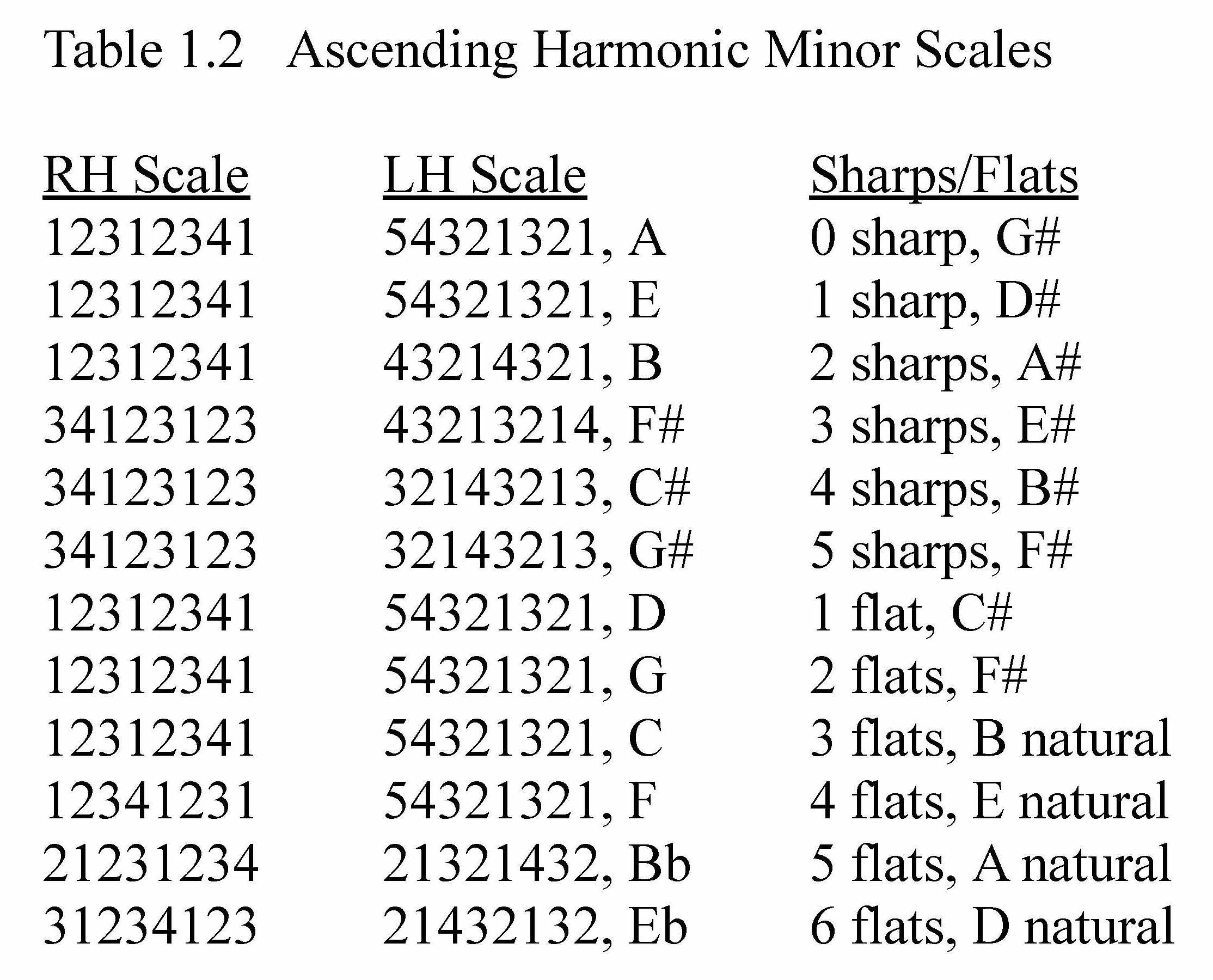(29) Scales: Nomenclature and Fingerings
Scales and arpeggios must be practiced, to acquire basic techniques and standard fingerings for routine playing and sight reading, so that they can be played without thinking about where each note and finger goes. Practice them in all the major and minor keys. Once you become familiar with the fingerings, there is no need to practice them every day although they make excellent warm up exercises.
The origins and properties of the chromatic and other scales are discussed in (76) Chromatic Scale. Here we discuss the nomenclature and fingerings. For theory discussions, the CDEFGAB notation is generally used; for singing, see Solfege [(68) Theory, Solfege].
The historical convention to fit the C major scale on all white keys was a mistake. The "uniform" key arrangement, consisting of alternate black and white keys throughout the keyboard, would have been better. This makes the octave one key narrower so that it is easier to reach wider chords, you need to learn only four scale fingerings for all keys, transposition is trivial especially for a full step, arpeggios are easier, the chromatic scale is easier to play, all distances between black keys are identical thus reducing errors, and students will learn piano faster. The only disadvantage is that the spaces between black keys will be narrower, making it more difficult for those with wide fingers.
In the nomenclature convention, it is unfortunate that C major was not named A major. Thus the octave numbers change at C, not A; therefore, at C4, the notes are numbered A3,B3,C4,D4, . . . These notes were named for the violin tuned at A and this convention was not coordinated with the keyboard. There was no reason why the violin couldn't have been tuned to F440, so that A major on the piano would be all white keys. For any scale, the first note is called the tonic, so C is the tonic of the C major scale. The lowest note of a 88 key keyboard is A(0) and the highest note is C8.
The standard major scale ascending fingerings (Table 1.1) are 12312345 (RH, one octave), 54321321(LH) for C,G,D,A,E major scales (with 0,1,2,3,4 sharps, respectively). The sharps increase in the order F,C,G,D,A, (G-major has F#, D-major has F# and C#, A-major has F#, C#, and G#, etc.) and for the F,Bb,Eb,Ab,Db,Gb, major scales, the flats increase in the order B,E,A,D,G,C; every interval between adjacent letters is a fifth. The violin's open strings are G,D,A,E. The letters always appear in the sequence GDAEBFC which represents the circle of fifths, and is worth memorizing. Because it is a circle, G comes after C. Look at B or Gb major scales in a music book and you will see how the 5 sharps or 6 flats line up in the same sequence on the staff. Thus 2 sharps will have sharps at F, C, three sharps will be F, C, G, etc. The flats increase in reverse order compared to the sharps. Each scale is identified by its key signature; thus the key signature of the G major scale has one sharp (F#). Learn to recognize the interval of a fifth on the keyboard; then you can generate all the scales in order of increasing sharps (by going up in fifths from C) or in order of increasing flats (by going down in fifths); this is useful for practicing all the scales in sequence without having to refer to the printed scales.
The minor scales are complex because there are three families of them, and can be confusing because they are often just called "minor" without specifying which of the three, or worse, each has been given several different names. They were created because they produce moods different from the others. The simplest minor scale is the relative minor (also called natural minor); it is simple because it shares the same key signature as its major relative, but its tonic moves up to the sixth note of its major relative, according to music textbooks. I find it easier to remember this as a minor 3rd down instead of a 6th up. Thus the relative minor of G major has its tonic at E and the key signature is F#, and is called E (relative) minor. Another minor is the melodic minor; it is created by raising the 6th and 7th notes of the relative minor by a semitone only when ascending; the descending part is unchanged. The third, and the most frequently used minor, is the harmonic minor which is created from the relative minor by raising the 7th note a semitone. Fingerings for the harmonic minor scales are shown in Table 1.2. The last column lists the raised note for the minor scale: thus A (harmonic) minor is ABCDEFG#A, and its relative major is C major.

